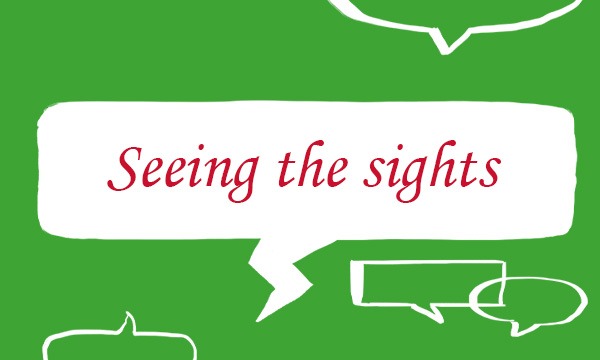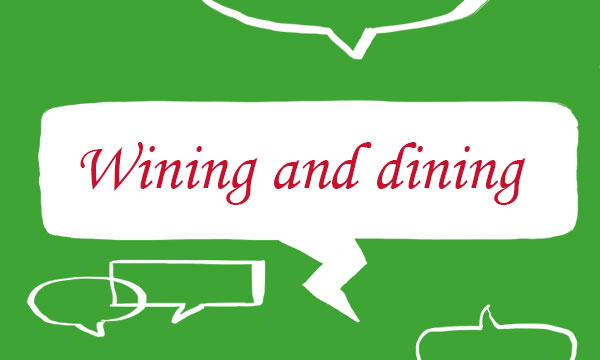One of the most challenging parts of learning a foreign language is getting to grips with all the different verb tenses. Verb tenses explain when events happen, whether in the past, present or future. In this short article we will explain and provide some examples of the most common tenses you’ll come across.
The present tense
The present tense is used to talk about what is true at the moment, what happens regularly and what is happening now, for example, ‘I’m a student’; ‘he works as a consultant’; ‘I’m studying Italian’.
There is more than one way to express the present tense in English. For example, you can either say ‘I speak, ‘I’m speaking’ or occasionally ‘I do speak’. In Italian, you use the same form parlo for all of these.
It is also possible to use another form: sto parlando, which is the exact equivalent of ‘I am speaking’, but this form is much less common in Italian than in English. It is used to stress that something is happening just at that point:
Stanno arrivando! [They’re coming!]
Cosa stai facendo? [What are you doing?]
In English you can also use the present tense to talk about something that is going to happen in the near future. You can do the same in Italian.
Parto domani alle undici. [I’m leaving tomorrow at eleven.]
Arriva la settimana prossima. [She’s coming next week.]
The future tense
The future tense is used to talk about something that will happen or will be true. There are several ways to express the future tense in English: you can use the future tense (‘I’ll ask him on Tuesday’), the present tense (‘I’m not working tomorrow’), or ‘going to’ followed by an infi nitive (‘she’s going to study in Italy for a year’). In Italian, you can use the future tense or the present tense.
Quando saranno pronti i documenti? [When will the documents be ready?]
Se non le dispiace ripasso sabato. [If you don’t mind I’ll come back on Saturday.]
Vedo Paolo giovedì. [I’m seeing Paolo on Thursday.]
Pensi di rivederlo? [Are you going to see him again?]
The imperfect tense
The imperfect tense is one of the tenses used to talk about the past, especially in descriptions, and to say what used to happen, or was happening, for example, ‘I used to live in Manchester’; ‘it was sunny yesterday’; ‘I was watching television’.
Ieri mi sentivo bene. [I felt fine yesterday.]
Quando ha telefonato dormivo. [I was sleeping when he phoned.]
Ci trovavamo ogni venerdì. [We used to meet every Friday.]
The perfect tense
In English, the perfect tense is made with the verb ‘have’ and the past participle: ‘I have done’; ‘he has gone’.
In Italian, the perfect tense is also made up of two parts: the present tense of avere or essere (known as auxiliary verbs) and the past participle, as in (‘I have done’; ‘she has spoken’).
The past participles of regular verbs are formed as follows:
With –are verbs, replace the –are of the infinitive with –ato (–ata/–ati/–ate).
With –ere verbs, replace the –ere of the infinitive with –uto (–uta/–uti/–ute).
With –ire verbs, replace the –ire of the infinitive with –ito (–ita/–iti/–ite).
Most verbs form the perfect tense with avere. There are two main groups of verbs which form their perfect tense with essere instead of avere: all reflexive verbs and a group of verbs that are mainly used to talk about movement or a change of some kind, including:
andare [to go]
venire [to come]
succedere [to happen]
partire [to leave, to go]
scendere [to go down, to come down, to get off]
salire [to go up, to come up]
entrare [to go in, to come in]
uscire [to go out, to come out]
morire [to die]
nascere [to be born]
diventare [to become]
restare [to stay]
cadere [to fall]
When essere is used to form the perfect tense, the past participle agrees with the subject of the verb.
Si è rotto una gamba. [He’s broken his leg.]
Sono partita prima di lui. [I left before him.]
Carla è uscita. [Carla has gone out.]
The past historic
This is equivalent to English simple past (‘I did’; ‘he went’; ‘she ate’). While in Italian, the perfect past is most commonly used in newspapers and in everyday conversation to convey this tense (though not in the south of Italy), the past historic is extensively used in Italian literature.
The imperative
An imperative is a form of the verb used when giving orders and instructions, for example, ‘Be quiet!’, ‘Don’t forget your passport!’, ‘Please fill in this form’.
In Italian, you give instructions or orders to someone by adding the appropriate endings to the verb stem, depending on whether the infinitive ends in –are, –ere or –ire.
To make suggestions (‘let’s’; ‘shall we?’), the noi form of the imperative is used.
Parlami del tuo nuovo ragazzo. [Tell me about your new boyfriend.]
Aiutate mi! [Help me!]
Prendiamo prima un aperitivo? [Shall we have a drink first?]
To tell someone not to do something, non is used with the imperative, except in the case of a person you call tu, when non is used with the infinitive.
Non preoccuparti! [Don’t worry!]
The conditional
The conditional is used to talk about things that would happen or could be true under certain conditions, for instance, ‘I would help you if I could’. It is also used to express wishes and desires, even for something as basic as, ‘I would like a coffee’. It is often used with the verbs: volere (to want), potere (to be able) and dovere (to have to – ‘should’ in the conditional).
Vorrei un caffè. [I’d like a coffee.]
Potrebbe venire domani. [He could come tomorrow.]
Luca dovrebbe imparare inglese. [Luca should learn English.]
The subjunctive
The subjunctive is used in unreal or hypothetical situations, often after certain impersonal expressions and after verbs expressing desire, will, preference, opinions and feelings (when the subject of the desire, wish, etc, is different to the subject of the verb). Usually there will be che (‘that’) between the expressions and the subjunctive.
Penso che siano pronti. [I think that they are ready.]
Bisogna che Fabio parta subito. [Fabio needs to leave now.]
Preferisce che stiamo in casa. [He prefers us to stay at home.]
So there you have it. Hopefully you’ll now feel much more confident in how and when to use the correct tense. More information can be found in the Italian Grammar section of this website.




collins_dictionary_official
The home of living language. #wotd #wordlovers #collinsdictionary
Read our word of the week definitions and blog posts: